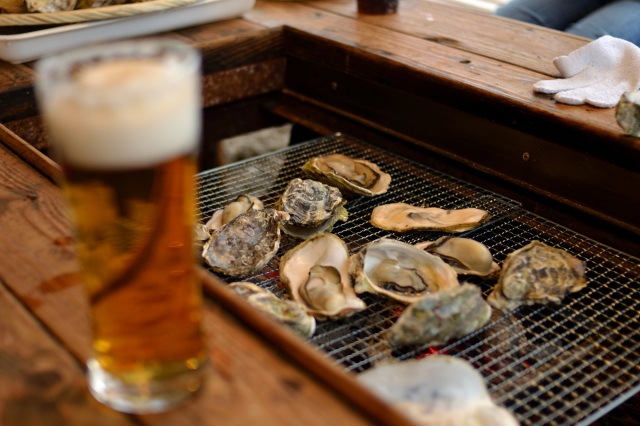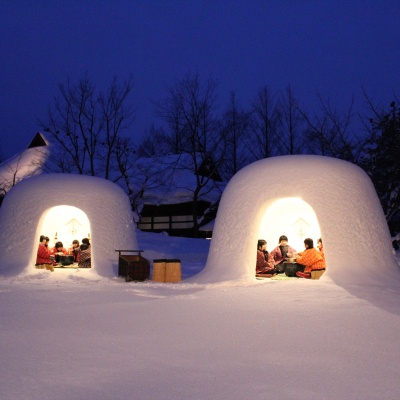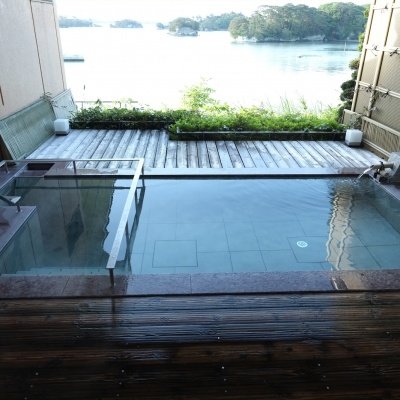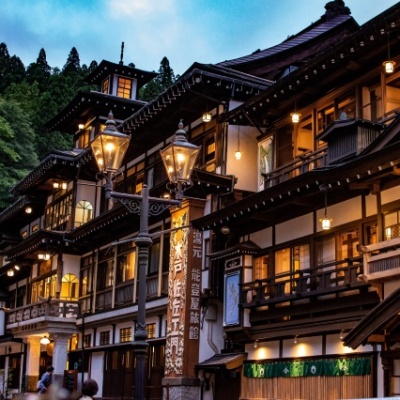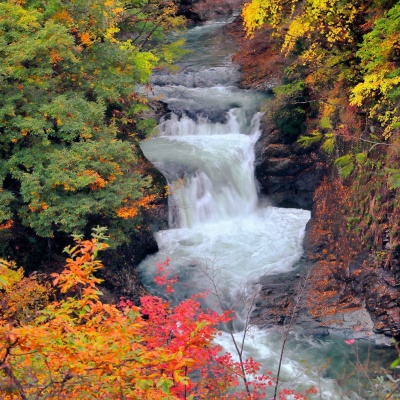Highlights of Sendai, Matsushima and Hiraizumi (2 days)
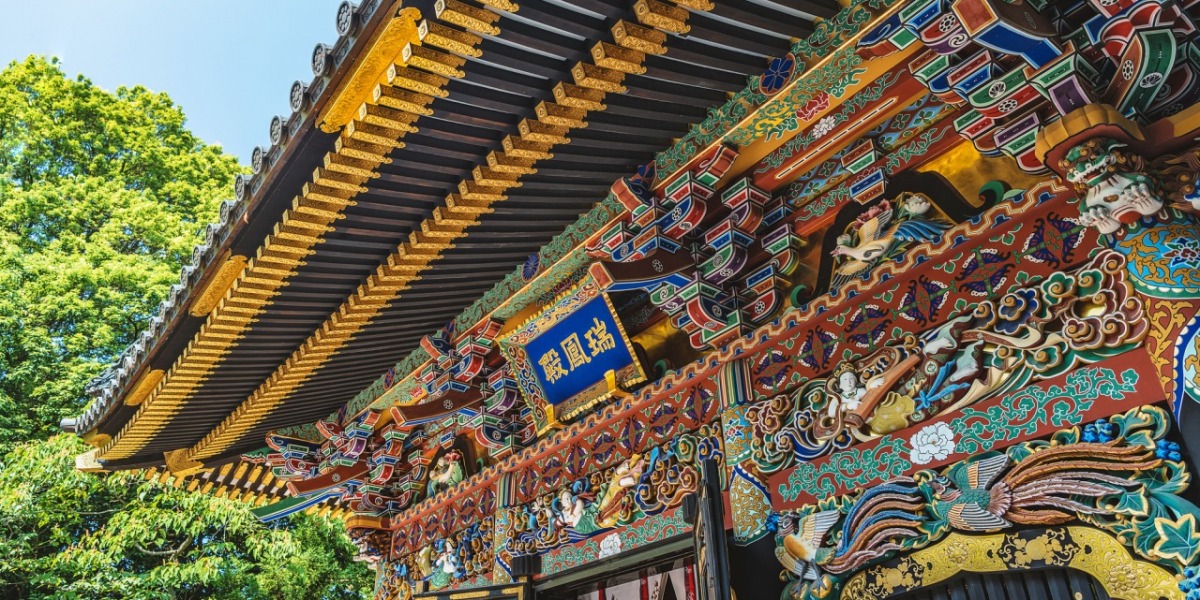
Highlights of Sendai, Matsushima and Hiraizumi (2 days)
START
Day1
Miyagi Prefecture Matsushima Rikyu
A new landmark has been created in Matsushima!
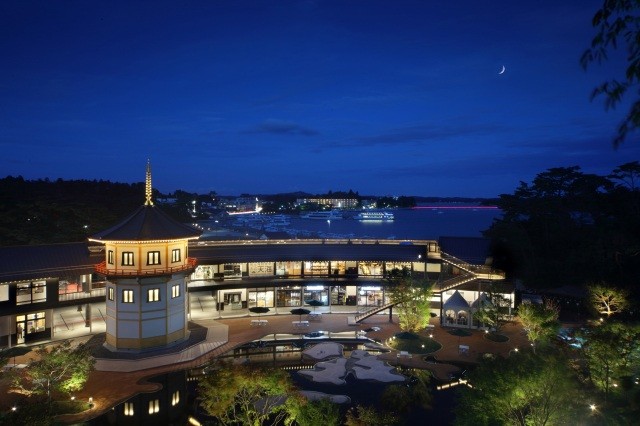
This is a tourist commercial facility that opened in October 2020 in Matsushima, one of the three most scenic spots in Japan. The scenery seen from the rooftop is an unprecedented sweeping view of Matsushima Bay. There are various workshop corners, including for kokeshi dolls, where workshops on Miyagi crafts and workshops for children are regularly held. There is also a tourist information center staffed by interpreters, where anyone can feel free to ask questions about sightseeing. Water sports, BBQs, and more are also available at the facility, making it a recommended place for families to relax and enjoy themselves without preparing anything in advance. In addition, please relax by the sea at the cafe open daily from 7:00, enjoy shopping for souvenirs and other items that can only be bought here, and savor a meal at the restaurant that carefully selects local ingredients.
Zuiganji Temple
A temple filled with the passion and aesthetics of the celebrated feudal lord Masamune
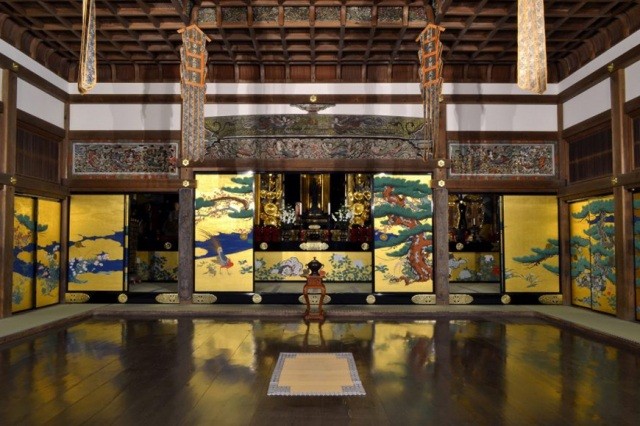
Zuiganji is the family temple of Masamune Date, a famous feudal lord of the Age of Civil Wars of the 15th and 16th centuries. The temple was originally founded in 828. After deterioration through the civil war period it was restored by Masamune Date and his aesthetic styling can be seen throughout the buildings.
The main hall and Kuri (the Zen kitchen) are designated national treasures. Inside the main hall the brilliant paintings on the sliding doors are a must see. The graceful Ume (Japanese plum) blossoms surrounding the main hall are exhilarating in spring. Visitors can also see Masamune’s aesthetics in the arabesque-pattern engravings in the Kuri.
Zuiganji offers much to see including officially designated Important Cultural Properties (Onarimon Gate, Nakamon Gate and Taiko-bei Wall), and a series of caves used for memorial services including the rock cave known as Hosshinkutsu.
The treasure house Seido-den exhibits paintings and tea ceremony items connected with the Date families along with the original paintings of the main hall’s sliding doors.
Zuiganji is one of the four temples of the Shiji Kairo Pilgrimage trail along with Chusonji and Motsuji in Hiraizumi, Iwate and Risshakuji in the mountains of Yamagata.
The renowned Entsuin temple is in the same complex and there are a number of restaurants and souvenir shops where visitors can take a break. Godaido Hall, the temple founded by Masamune previous to Zuiganji, is located nearby on the shore of Matsushima Bay.
After enjoying the breath-taking views across Matsushima Bay – known as one of Japan’s top three scenic sights – these temples are the perfect place to calm the mind and feel the spirit of the feudal Date family.
A thematic journey in the Tohoku region:Okuno Hosomichi・The History of Michinoku
The main hall and Kuri (the Zen kitchen) are designated national treasures. Inside the main hall the brilliant paintings on the sliding doors are a must see. The graceful Ume (Japanese plum) blossoms surrounding the main hall are exhilarating in spring. Visitors can also see Masamune’s aesthetics in the arabesque-pattern engravings in the Kuri.
Zuiganji offers much to see including officially designated Important Cultural Properties (Onarimon Gate, Nakamon Gate and Taiko-bei Wall), and a series of caves used for memorial services including the rock cave known as Hosshinkutsu.
The treasure house Seido-den exhibits paintings and tea ceremony items connected with the Date families along with the original paintings of the main hall’s sliding doors.
Zuiganji is one of the four temples of the Shiji Kairo Pilgrimage trail along with Chusonji and Motsuji in Hiraizumi, Iwate and Risshakuji in the mountains of Yamagata.
The renowned Entsuin temple is in the same complex and there are a number of restaurants and souvenir shops where visitors can take a break. Godaido Hall, the temple founded by Masamune previous to Zuiganji, is located nearby on the shore of Matsushima Bay.
After enjoying the breath-taking views across Matsushima Bay – known as one of Japan’s top three scenic sights – these temples are the perfect place to calm the mind and feel the spirit of the feudal Date family.
A thematic journey in the Tohoku region:Okuno Hosomichi・The History of Michinoku
Godaido Temple
The symbol of Matsushima - this temple sits on its own small island with a connecting vermilion-lacquered bridge
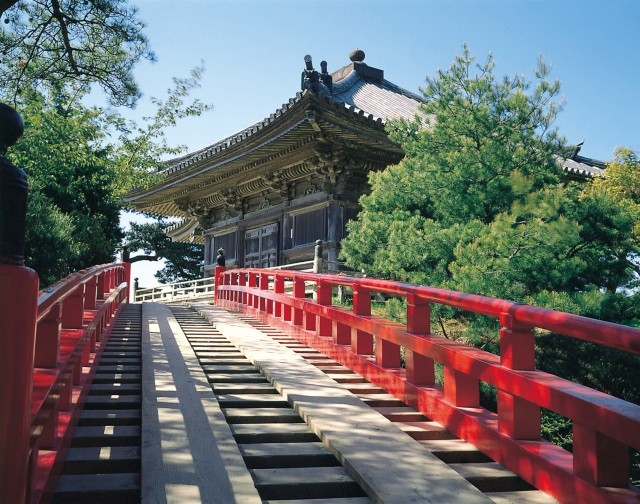
Perched on a small island jutting out into Matsushima Bay with a vermilion-lacquered bridge connecting it to the mainland, Godaido Temple is the traditional symbol of Matsushima and a scenic location from which to view the bay.
The small temple was originally founded as Bishamondo by the famous general Tamuramaro Sakanoue in 807 and took its name Godaido when the priest Ennin installed images of the Five Wisdom Kings in 828. The temple opens its doors to the public for the viewing of these images only once every 33 years.
The present temple is the one founded by the celebrated feudal lord Masamune Date. The meticulous carvings of the 12 signs of the zodiac under the eaves reflect the artistic style of the Azuchi-Momoyama period which flourished between late 16th and early 17th centuries. Godaido Temple is designated an Important Cultural Property as Tohoku’s oldest building in the style of the Azuchi-Momoyama period.
When walking across Sukashi Bridge connecting the mainland and Godaido Temple visitors can observe the water below through the wide gaps in the bridge floor. These gaps were intentionally left so that visitors would brace themselves before praying in the temple. The original bridge was in the form of a ladder, two horizontal boards were later added to allow an easier walk.
Legend has it that one night the image of Bishamonten (Vaisravana) that was enshrined by Tamuramaro Sakanoue at Bishamondo flew away to an offshore island when the priest Ennin installed the images of the Five Wisdom Kings at Bishamondo as a part of Enpukuji (Zuiganji), after which the island took its name and became Bishamon Island.
Visitors enjoy the spectacular view of the floating islands of Matsushima Bay while reflecting on this legend. Visiting the twin temples of Zuiganji and Godaigo makes for a magical Matsushima experience!
The small temple was originally founded as Bishamondo by the famous general Tamuramaro Sakanoue in 807 and took its name Godaido when the priest Ennin installed images of the Five Wisdom Kings in 828. The temple opens its doors to the public for the viewing of these images only once every 33 years.
The present temple is the one founded by the celebrated feudal lord Masamune Date. The meticulous carvings of the 12 signs of the zodiac under the eaves reflect the artistic style of the Azuchi-Momoyama period which flourished between late 16th and early 17th centuries. Godaido Temple is designated an Important Cultural Property as Tohoku’s oldest building in the style of the Azuchi-Momoyama period.
When walking across Sukashi Bridge connecting the mainland and Godaido Temple visitors can observe the water below through the wide gaps in the bridge floor. These gaps were intentionally left so that visitors would brace themselves before praying in the temple. The original bridge was in the form of a ladder, two horizontal boards were later added to allow an easier walk.
Legend has it that one night the image of Bishamonten (Vaisravana) that was enshrined by Tamuramaro Sakanoue at Bishamondo flew away to an offshore island when the priest Ennin installed the images of the Five Wisdom Kings at Bishamondo as a part of Enpukuji (Zuiganji), after which the island took its name and became Bishamon Island.
Visitors enjoy the spectacular view of the floating islands of Matsushima Bay while reflecting on this legend. Visiting the twin temples of Zuiganji and Godaigo makes for a magical Matsushima experience!
Lunch in Matsushima (enjoy the fresh seafood of the season)
Zuihoden
The resting place of Date Masamune
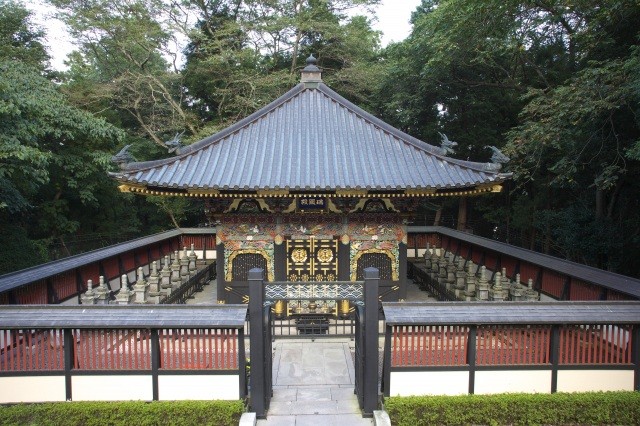
Zuihoden is the mausoleum of Date Masamune, the founder of Sendai and most powerful daimyo (feudal lord) of the Tohoku region. Constructed in 1637 and designated as a National Treasure in 1931, it was destroyed by a fire during the second world war; the present structure was built in 1979 and reconstructed in its original Momoyama architectural style. There is a second and third generation mausoleum on the site, as well as a museum displaying excavation materials.
*Please check the official website for the latest information.
*Please check the official website for the latest information.
Sendai Castle ruins
An impregnable and famous castle built on Mt Aoba.
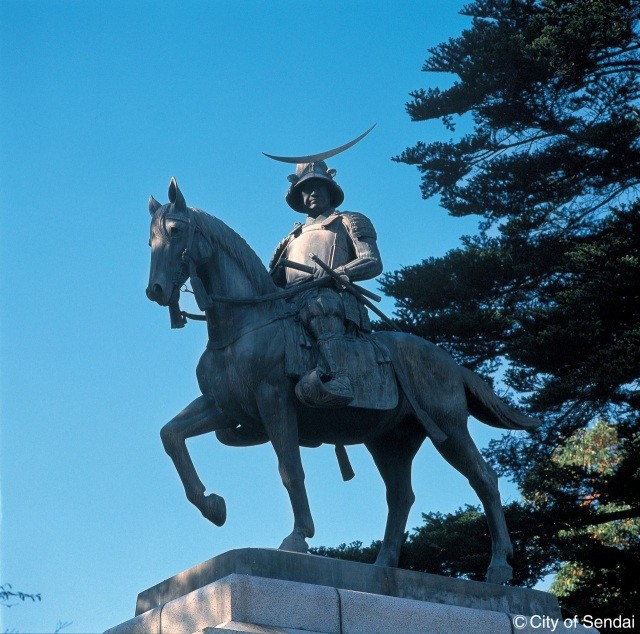
Sendai Castle (Aoba Castle) was the residence of Date 620,000 goku. The castle was built at an elevation of 130 m above sea level, with cliffs to the east and south. It is said that the castle did not have a castle tower to avoid the warnings of Shogun Tokugawa Ieyasu. Unfortunately, the castle is now gone, and the reconstructed side turrets are a reminder of bygone days. If you stand in front of the statue of Masamune Masamune's cavalryman, you can view the city of Sendai from the same vantage point as Masamune, who was ambitious to conquer the whole country.
At the Aoba Castle Museum and Exhibition Hall, visitors can view computer-generated images of a reconstruction of Aoba Castle. In the summer of 2003, Aoba Castle was designated as a National Historic Site.
The area around the ruins of the castle is Aobayama Park, and from the ruins of the castle's main citadel, you can enjoy a panoramic view of Sendai City and the Pacific Ocean. In front of the bronze statue of Bansui Doi, an automatic performance of "The Moon over the Deserted Castle" is played every 30 minutes from 9:00 to 18:00. From the castle tower, visitors can enjoy the night view of Sendai, a city of one million.
At the Aoba Castle Museum and Exhibition Hall, visitors can view computer-generated images of a reconstruction of Aoba Castle. In the summer of 2003, Aoba Castle was designated as a National Historic Site.
The area around the ruins of the castle is Aobayama Park, and from the ruins of the castle's main citadel, you can enjoy a panoramic view of Sendai City and the Pacific Ocean. In front of the bronze statue of Bansui Doi, an automatic performance of "The Moon over the Deserted Castle" is played every 30 minutes from 9:00 to 18:00. From the castle tower, visitors can enjoy the night view of Sendai, a city of one million.
Akiu Onsen
A well-located hot spring close to many natural attractions
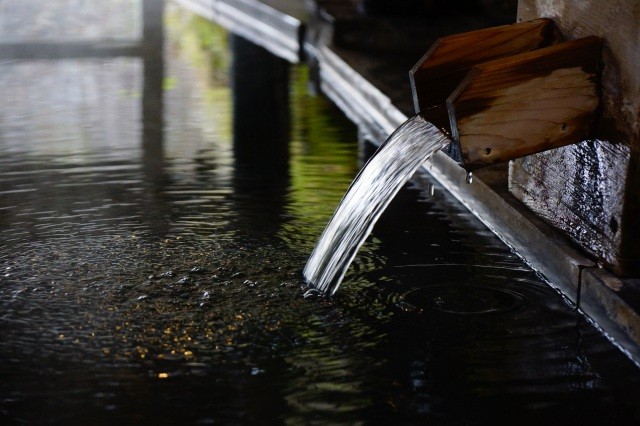
Visit Aiku Onsen and relax and escape in an area surrounded by nature. Come and visit during the time when seasonal changes are on full display for a more special time; take an open-air bath and spend a special and luxurious time admiring the changing colors of the trees during the autumn for example.
*Please check the official website for the latest information.
*Please check the official website for the latest information.
Day2
Motsuji Temple
Free your mind in this temple’s peaceful garden known as Buddha’s Paradise
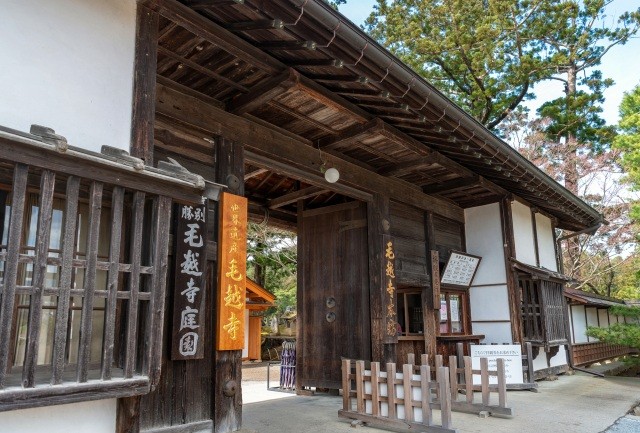
Motsuji Temple is a designated UNESCO World Cultural Heritage Site along with nearby Chusonji Temple in Hiraizumi. The beautiful Japanese garden and ancient religious buildings are officially recognised both as a historic site and as a place of exceptional scenic beauty.
The priest Ennin originally founded the temple and the construction of the temple complex was done during the 2nd and 3rd generations of Oshu Fujiwara clan.
The beautiful Japanese garden representing Buddha’s Paradise is breath-taking. Visitors can enjoy the Pure Land Garden, a popular garden style of the Heian period with its unique landscape design techniques, surrounding the central Oizumi-ga-ike pond.
The peaceful garden fascinates visitors with its beautiful seasonal flowers and is the perfect place to escape from the hustle and bustle of everyday life. Many people come here during the Iris Festival in early summer and the “Hagi” Japanese Bush Clover Festival in early autumn. For those wanting a deeper Buddhist experience, the temple offers Zen meditation sessions and Buddhist sutra transcription courses introducing participants to Japanese Buddhism.
Thanks to the flat nature of the location the temple is easily accessible. Lifts and accessible toilets are available in the temple buildings for the seniors and families with children.
A thematic journey in the Tohoku region:Okuno Hosomichi・The History of Michinoku
The priest Ennin originally founded the temple and the construction of the temple complex was done during the 2nd and 3rd generations of Oshu Fujiwara clan.
The beautiful Japanese garden representing Buddha’s Paradise is breath-taking. Visitors can enjoy the Pure Land Garden, a popular garden style of the Heian period with its unique landscape design techniques, surrounding the central Oizumi-ga-ike pond.
The peaceful garden fascinates visitors with its beautiful seasonal flowers and is the perfect place to escape from the hustle and bustle of everyday life. Many people come here during the Iris Festival in early summer and the “Hagi” Japanese Bush Clover Festival in early autumn. For those wanting a deeper Buddhist experience, the temple offers Zen meditation sessions and Buddhist sutra transcription courses introducing participants to Japanese Buddhism.
Thanks to the flat nature of the location the temple is easily accessible. Lifts and accessible toilets are available in the temple buildings for the seniors and families with children.
A thematic journey in the Tohoku region:Okuno Hosomichi・The History of Michinoku
Chuson-ji Temple
A World Heritage temple complex featuring a dazzling golden hall

The "Cultural Heritage of Hiraizumi" was registered as a World Heritage Site in 2011. Chuson-ji Temple is famous for its gorgeous golden Konjikido (Konjikido), but there is much more to see, including Benkei-do, Yakushido, and the main hall!
Chuson-ji was founded in 850 by the great priest Jikaku Daishi Ennin, and in the early 12th century, Kiyohira, the first generation of the Oshu Fujiwara clan, began the construction of a large hall and pagoda. Kiyohira, who had lost his family in the war, is said to have expressed his wish for a peaceful ideal society based on the teachings of Buddha. Hiraizumi prospered as a gold-producing area, and Motohira the second, followed by Hidehira the third, flourished for nearly 100 years until Yasuhira the fourth was destroyed by the Minamoto clan. Konjikido, National Treasure No. 1, is the culmination of the craftsmanship of the time, including mother-of-pearl inlay, openwork carving, and lacquer maki-e. The "Sankozo" houses Buddhist statues and other valuable cultural assets. As a treasure house of Buddhist art representative of eastern Japan, the museum preserves the history and prosperity of the Oshu Fujiwara clan.
The temple is also attractive for its seasonal changes in appearance: cherry blossoms in spring, fresh greenery in summer, autumn leaves in fall, snow in winter, and the building and its natural surroundings.
Chuson-ji was founded in 850 by the great priest Jikaku Daishi Ennin, and in the early 12th century, Kiyohira, the first generation of the Oshu Fujiwara clan, began the construction of a large hall and pagoda. Kiyohira, who had lost his family in the war, is said to have expressed his wish for a peaceful ideal society based on the teachings of Buddha. Hiraizumi prospered as a gold-producing area, and Motohira the second, followed by Hidehira the third, flourished for nearly 100 years until Yasuhira the fourth was destroyed by the Minamoto clan. Konjikido, National Treasure No. 1, is the culmination of the craftsmanship of the time, including mother-of-pearl inlay, openwork carving, and lacquer maki-e. The "Sankozo" houses Buddhist statues and other valuable cultural assets. As a treasure house of Buddhist art representative of eastern Japan, the museum preserves the history and prosperity of the Oshu Fujiwara clan.
The temple is also attractive for its seasonal changes in appearance: cherry blossoms in spring, fresh greenery in summer, autumn leaves in fall, snow in winter, and the building and its natural surroundings.
Lunch at around JR Ichinoseki station
Ichinoseki’s Historic Mochi Cuisine
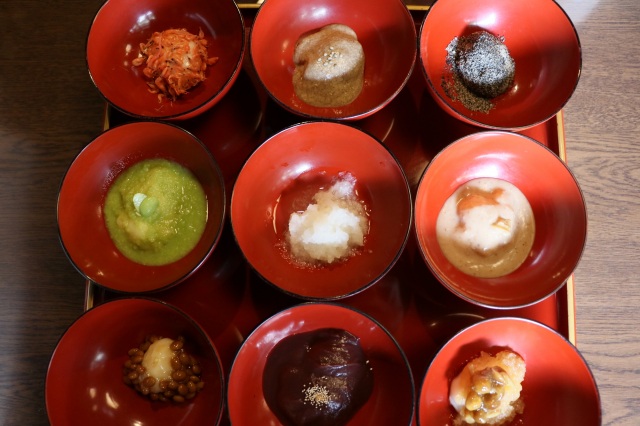
Ichinoseki city in Iwate and the surrounding area has a long history of Mochi (sticky rice cake) thanks to the region’s crops of excellent sticky rice. The locals say that over 300 varieties of Mochi dishes are available in the region including “Mochi Honzen” dating back to the Edo period when the Date clan ruled the region. Honzen cuisine is a formal meal served on a personal tray and “Mochi Honzen” is a multi-course meal with a variety of Mochi dishes prepared in a ritualised style. A wide range of Mochi dishes are available including sweets, savoury side dishes and fusion dishes combining Mochi with international cuisine.
Search Restaurants
Search Restaurants
GOAL
